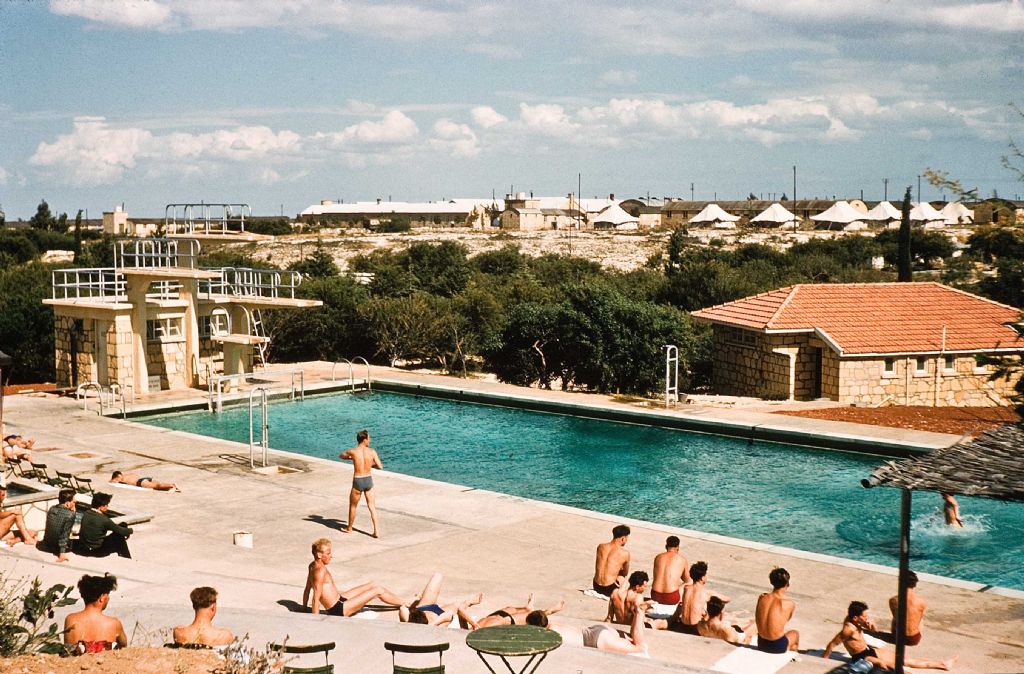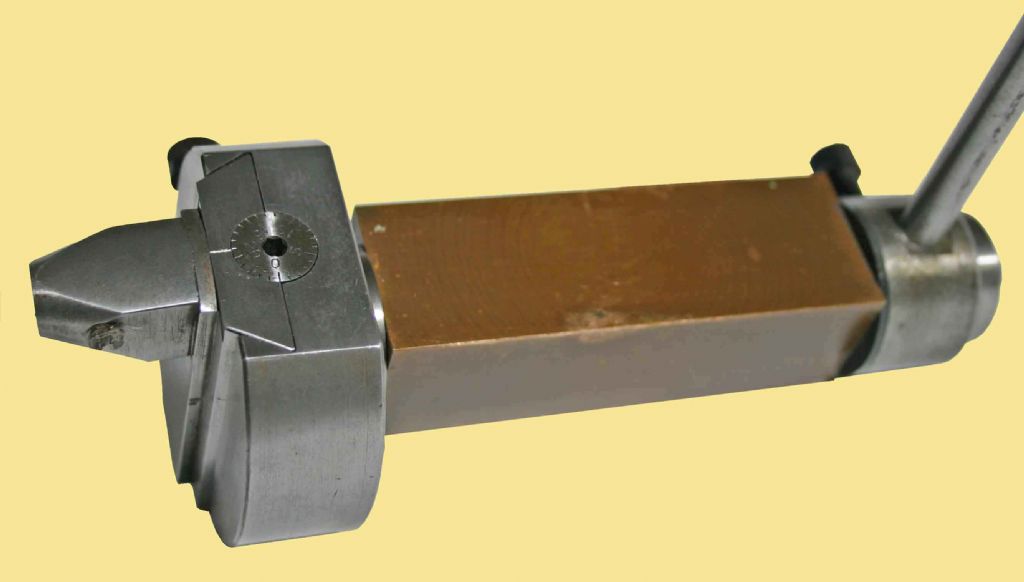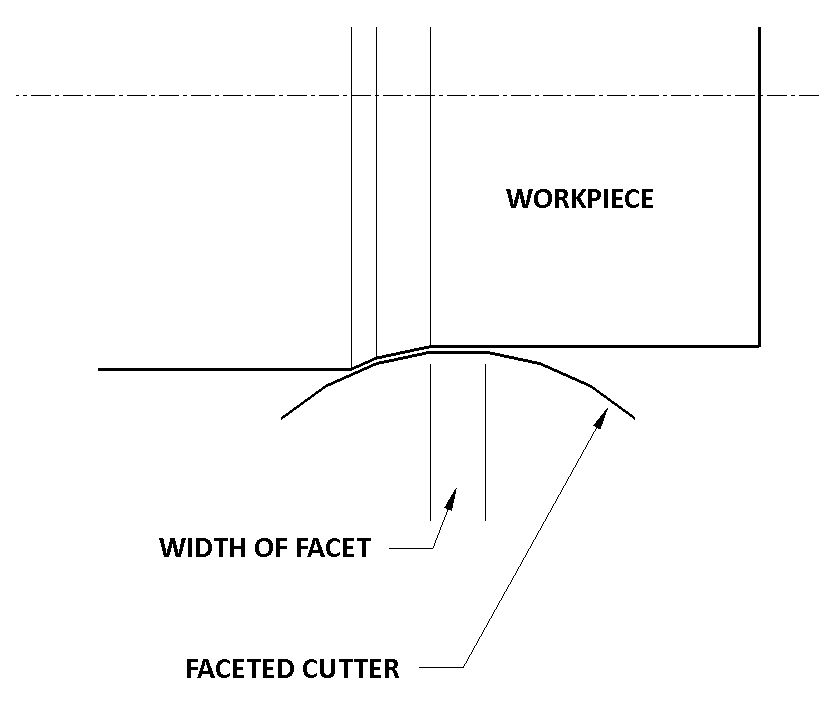Member postings for Sam Stones
Here is a list of all the postings Sam Stones has made in our forums. Click on a thread name to jump to the thread.
| Thread: What is it |
| 30/10/2021 21:38:52 |
Agreed Bob, A bit big for valve guides. There's a clue in the direction of wire twist. In use, they tighten around the cloth. Sam |
| 30/10/2021 21:25:48 |
A strip of abrasive cloth inserted between the wires is then wrapped around to form an abrasive 'cylinder'. Thus equipped, the device is held in a powered drill or similar, and can be used to polish and otherwise improve the bore of (as suggested by Kiwi Bloke) valve guides, etc. etc.
|
| 30/10/2021 19:57:42 |
It’s for gripping a strip of abrasive cloth. |
| Thread: Advice from the photographers. |
| 23/10/2021 23:49:21 |
This was a Kodachrome slide taken through my first 35mm camera; a Baldessa 1a or 1b, I can't remember. The slide hadn't been stored between glass, and other than cropping required no extra editing. This next one (before and after) was one in a bad condition, yet stored between glass. It shows what's possible in Photoshop. The original slide (c1960), was Kodachrome taken in Holland via a Leica M4 (not mine). Good luck Nathan! Sam
Edited By Sam Stones on 23/10/2021 23:51:08 |
| 23/10/2021 23:27:12 |
These days I would do what John Haine recommends. However, here's another approach. Back-lit with flash through a (plastic film) diffusion screen. A cut-down cardboard postal tube set the distance, with a Speedlite transmitter for camera to flash sync. Conveniently, I used the slide carrier from an ancient slide projector. Many of the slides taken in the late 50's and sandwiched in glass were badly in need of cleaning. Very laborious, but overall a pleasing result. I'll post a sample now that I've remembered, i.e. load picture files first! Cheers Sam
|
| Thread: First Clock in Metric |
| 21/10/2021 19:44:31 |
I imagine Iain, that you've come across this series by Chris of Clickspring? Which ever way you go, watching Chris's videos as he makes the 'Large Wheel Skeleton Clock' is well worth a visit. Cheers, Sam Edited By Sam Stones on 21/10/2021 19:46:37 |
| 19/10/2021 22:14:38 |
Iain, you might consider John Stevens’ Skeleton Clock, (Model Engineer c1972*). As an impressive starter project (that superseded my original intention of building a model beam engine), I can now describe this clock as a ‘Not really for beginners’. However, apart from Mr Stevens’ design being entirely Imperial, you appear to have all the necessary skills and equipment to succeed. Over a period spanning many years, the project consumed a considerable amount of time, not just mine but that of many others. I can’t recall how many ME members came to my rescue. Peruse my two albums to see the sort of ‘warts and all’ mess I got myself in. Part 1 (47 photos) **LINK** Part 2 (23 photos) **LINK** *Mr John Stevens’ clock design appeared in five issues of Model Engineer commencing in February 1972. Vol 138, issues 3434, 3435, 3437, 3438, & 3439. Then there were my own efforts described here … Building John Stevens’ Skeleton Clock – 7 Parts - Model Engineer – #4526 – 22 Jan 2016 – Last part #4538 – 8 Jul 2016. Good hunting. Sam |
| Thread: Sphere Turner |
| 12/10/2021 22:45:25 |
Yes Paul, very similar. As my memory mist clears slightly, I feel sure it was described with drawings in ME. That would have to be pre '72. When I made it I'm not sure. Late 60's or early 70's. It went out with my ML7 and most other stuff in '07. Cheers, Sam From a still chilly Melbourne.
|
| 12/10/2021 19:59:39 |
Vic, FWIW - I have a faint idea that this one was described in Model Engineer many years ago, perhaps in the 60's. A round cutter (e.g. a piece of broken drill bit) is inserted into the left hand end and pokes out as per the illustrations in the links above. Other than making a couple of stainless steel handles (for a six-way turret and a rear tool post, oh and an aluminium ball on the end of the handle which I carelessly cropped off in the photograph), I hardly ever used it. Capacity? About 50 mm max. One extravagance was the bronze body, a left-over from another job. The bronze body was made to be clamped in the normal (ML7) tool post. I seem to recall making the lead screw with a 40 tpi thread. It allowed very fine adjustment. Cheers, Sam Edited By Sam Stones on 12/10/2021 20:01:28 |
| Thread: Hardening gauge plate (O1) |
| 04/10/2021 22:07:12 |
Thanks for an interesting thread Robin. Apologies for any repetition. It’s too long ago and I no longer have the endurance to try to reiterate what I learned in ONC and HNC Mech Eng, but for a theoretical insight into what is taking place, take a peek at this - Someone here might like to highlight in simple terms, the basics of the rate-of-change from FCC to BCC and the way it influences properties. At a practical level, I’d recommend attention be given to –
Incidentally, it may be a surprise to discover that Young’s Modulus of Elasticity hardly changes. Have fun, especially with your tests, Robin. Cheers, Sam |
| 29/09/2021 01:24:25 |
As a follow up to Andrew and Tony’s comments, I couldn’t resist telling the following story. I was into my 2nd or 3rd year of my apprenticeship when a rather precarious situation developed. The toolroom heat-treatment plant (a closed off section of the workshop measuring about 8 metres by 6 metres), was equipped with various gas and electric fired cyanide furnaces. A basic gas torch and a brick hearth, along with a bucket of whale oil were there ‘for personal use’. Quenching of the major throughput was either into a warm water bath for smaller parts, or a very full tank of oil. This tank measured about 150cm deep and was roughly the same diameter. One of the older toolmakers was responsible for all of the once-a-week ‘serious’ heat treatment. Almost full, the large oil bath became a considerable (flash) point of interest when a large and very hot piece of tool steel (an insert for a compression mould) was being quenched. For scale, the piece (effectively one of several thick-walled cylinders) measured about 150mm diameter and some 400mm long. It was bored out about 45mm diameter through its entire length. Transferred with some difficulty from a cyanide bath to the hand-operated hoist, the hoist failed (jammed) while the hot insert was half in and half out of the oil. It doesn’t take much imagination to visualise what happened next. During the initial struggle to free the jammed hoist, the oil began to boil and instantly caught fire. Flames quickly crept across the surface and out to the edge of the tank. Within seconds, flaming oil was dripping onto the floor. Of greater concern was what was on the other side of the brick wall and thin cement sheeting. It was the powder room known as the drugstore. It supplied measured amounts of rubber, sulphur, and powdered coal to several Banbury mixers and two-roll mills. Having, for a short while peered through the open door as a not particular welcome spectator, it was time to make my exit. The foreman and a couple of others succeeded in releasing the jammed hoist, quenching the steel, and extinguishing the fire with sand etc. The fire brigade arrived to find the toolroom filled with smoke. I suspect the other cylinders were subcontracted. Perhaps that's why I prefer a water quench Cheers, Sam
|
| 28/09/2021 02:38:48 |
Hi Robin, With a tool-making background commencing in 1950, your comment ... 'But it's not the right way to do it and that worries me!' ... was a surprise. With a similar high-carbon content to silver steel, I have always (rightly or wrongly) heat treated gauge steel (gauge plate) the same way. Heated to cherry red, I always quenched either of the steels into clean water. Although it was done with much larger items in the toolroom, into oil never impressed me for the small items I'd made. Tempering back as appropriate for the end purpose, e.g. cutting tools, etc. would be controlled by a further immersion into water. There'll be, I suspect, a plethora of further responses, directing you to previous threads. Cheers, Sam
|
| Thread: Macro-photography |
| 23/09/2021 21:42:31 |
Parallel, Crossed-eyed, or both Neil? Sam |
| Thread: Astro-skeleton clock project |
| 08/09/2021 23:37:23 |
Here’s another peek into the progress of Mark Frank/Buchanan’s master timepiece.
|
| Thread: Macro-photography |
| 03/09/2021 02:37:41 |
I feel sure this will interest those ME members keen on improving their macro photography techniques ... Simon Booth - My 8 Essential Macro Photography Tips for Nature Photographers Have fun, Sam |
| Thread: Vehicle reversing sensors |
| 20/07/2021 01:10:51 |
Reversing will never be the same again Nigel.
|
| 19/07/2021 23:53:55 |
Although as MichaelG suggests there’s nothing definitive (well not so far), I have found this short exercise an interesting digression. Thanks to John, Dave (SoD), and oldvelo too for your links. Some of it was too challenging for my brain. Roy, your experience with the Fiesta made me smile, although Robert, I’m not in favour of your wife’s ‘touch parking’ technique. After all that, my guess is … under very rare conditions, there could be a false warning (albeit fail-safe) between cars installed with identical reverse-sensor-signatures, positioned back to back, and in line, but … ??? Sam From not-so-sunny Melbourne |
| Thread: Can't get the hang of HSS! |
| 18/07/2021 21:53:41 |
For clarification, my recollection of ‘diamond turning’ takes me back to either ONC or HNC Mech. Eng. I can’t be sure if the tool tip was an actual faceted diamond.
The particular facet was set to be parallel with the traverse using a microscope, while the width of the facet spanned the feed pitch. I seem to recall it was used mainly for aluminium in the aircraft industry, but not sure. Have fun, Sam
|
| Thread: Vehicle reversing sensors |
| 18/07/2021 00:53:00 |
Thanks for your reply Jon. For some reason (mainly my own ignorance) BFO also comes to mind too. Were are the specialists when you need one? Cheers, Sam
|
| 17/07/2021 23:28:30 |
More of the story and the reason for my question. While reversing from a parking spot in a very busy supermarket car park, the reversing sensor alarm came on and yet there was nothing close enough to activate it. Then I noticed another vehicle with reversing lights lit about to back out towards me into the same lane. Still curious, Sam |
Want the latest issue of Model Engineer or Model Engineers' Workshop? Use our magazine locator links to find your nearest stockist!
Sign up to our newsletter and get a free digital issue.
You can unsubscribe at anytime. View our privacy policy at www.mortons.co.uk/privacy
- *Oct 2023: FORUM MIGRATION TIMELINE*
05/10/2023 07:57:11 - Making ER11 collet chuck
05/10/2023 07:56:24 - What did you do today? 2023
05/10/2023 07:25:01 - Orrery
05/10/2023 06:00:41 - Wera hand-tools
05/10/2023 05:47:07 - New member
05/10/2023 04:40:11 - Problems with external pot on at1 vfd
05/10/2023 00:06:32 - Drain plug
04/10/2023 23:36:17 - digi phase converter for 10 machines.....
04/10/2023 23:13:48 - Winter Storage Of Locomotives
04/10/2023 21:02:11 - More Latest Posts...
- View All Topics
- Reeves** - Rebuilt Royal Scot by Martin Evans
by John Broughton
£300.00 - BRITANNIA 5" GAUGE James Perrier
by Jon Seabright 1
£2,500.00 - Drill Grinder - for restoration
by Nigel Graham 2
£0.00 - WARCO WM18 MILLING MACHINE
by Alex Chudley
£1,200.00 - MYFORD SUPER 7 LATHE
by Alex Chudley
£2,000.00 - More "For Sale" Ads...
- D1-3 backplate
by Michael Horley
Price Not Specified - fixed steady for a Colchester bantam mark1 800
by George Jervis
Price Not Specified - lbsc pansy
by JACK SIDEBOTHAM
Price Not Specified - Pratt Burnerd multifit chuck key.
by Tim Riome
Price Not Specified - BANDSAW BLADE WELDER
by HUGH
Price Not Specified - More "Wanted" Ads...
Do you want to contact the Model Engineer and Model Engineers' Workshop team?
You can contact us by phone, mail or email about the magazines including becoming a contributor, submitting reader's letters or making queries about articles. You can also get in touch about this website, advertising or other general issues.
Click THIS LINK for full contact details.
For subscription issues please see THIS LINK.
Model Engineer Magazine
- Percival Marshall
- M.E. History
- LittleLEC
- M.E. Clock
ME Workshop
- An Adcock
- & Shipley
- Horizontal
- Mill
Subscribe Now
- Great savings
- Delivered to your door
Pre-order your copy!
- Delivered to your doorstep!
- Free UK delivery!














 Register
Register Log-in
Log-in


